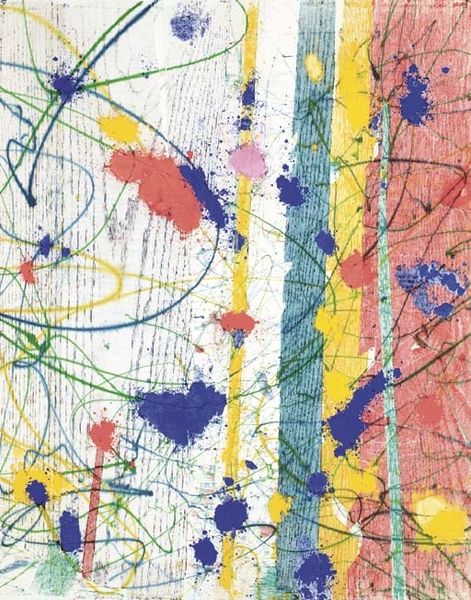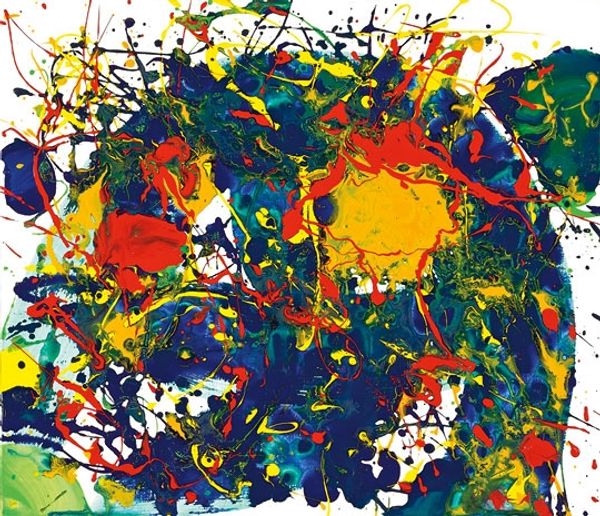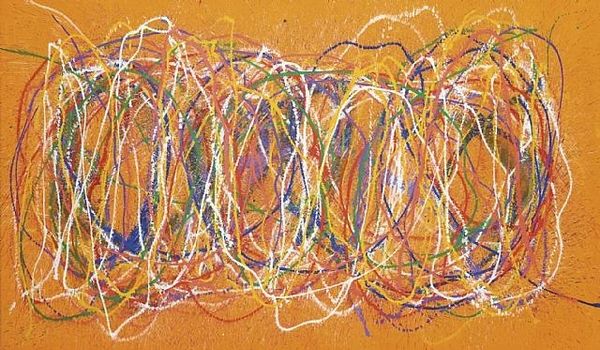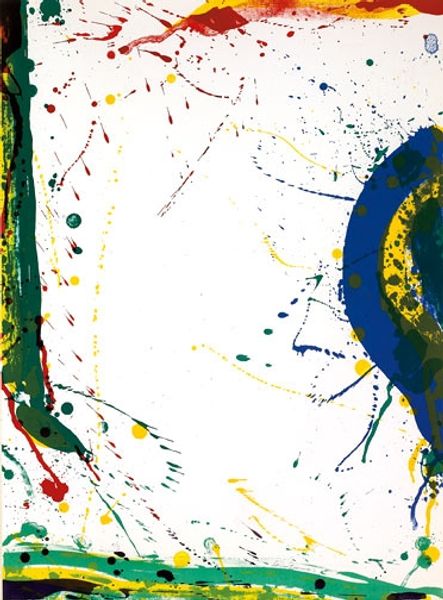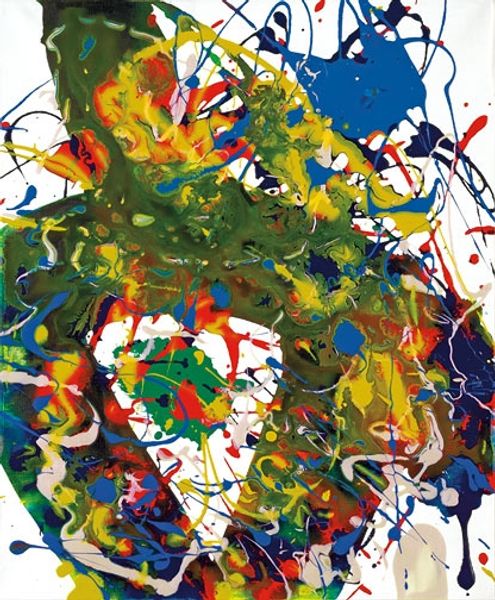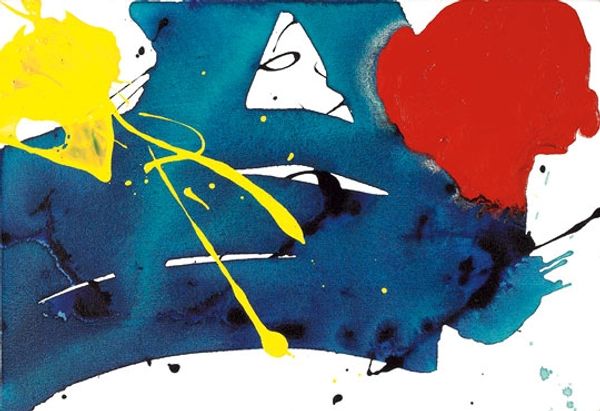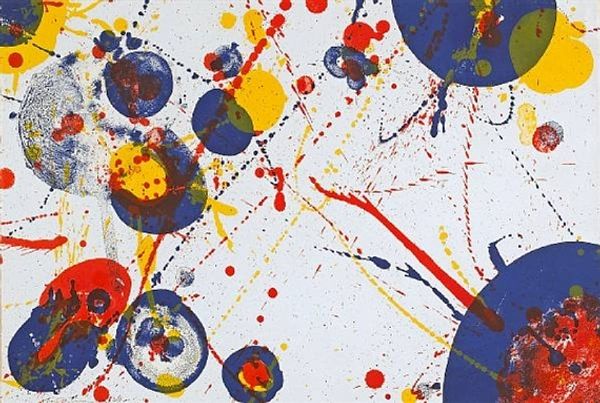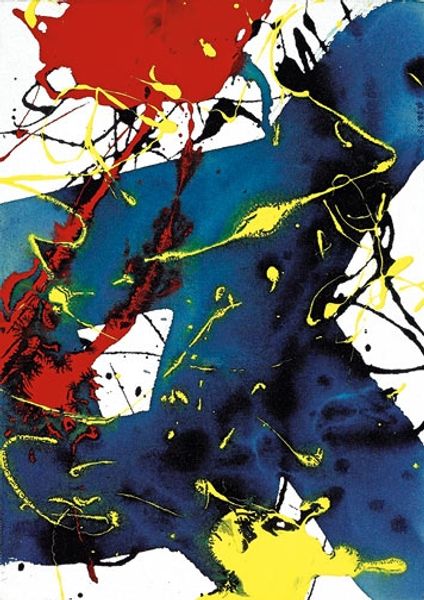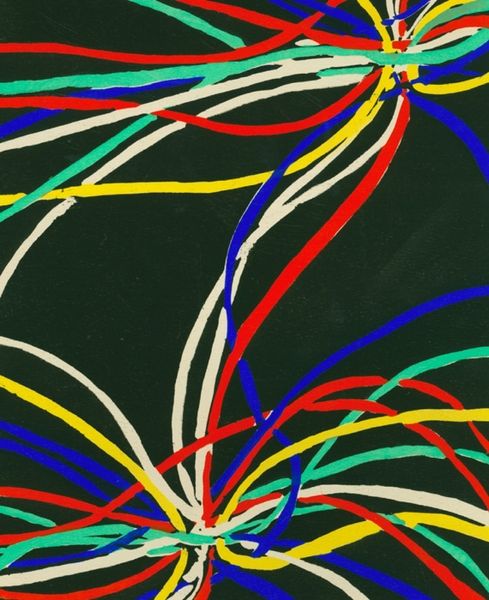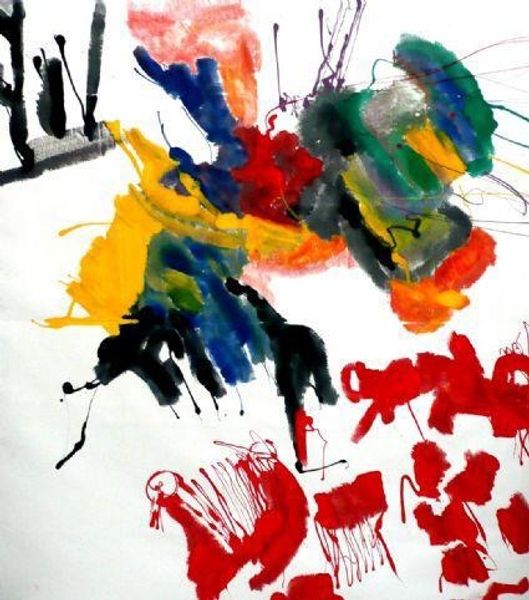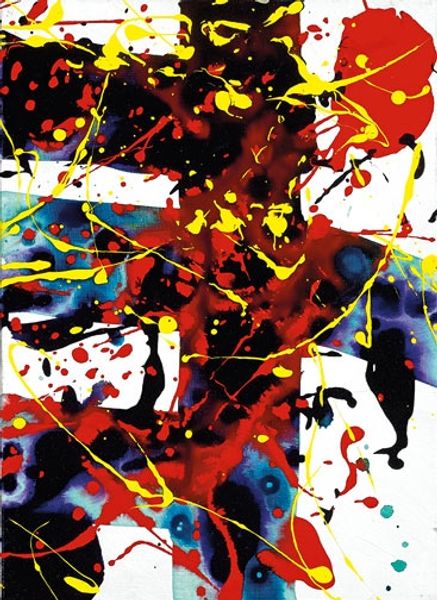
Copyright: Marcel Barbeau,Fair Use
Editor: Marcel Barbeau's "Reflets Printanieres," created in 1989 using acrylic paint, presents this lively array of colors. The painting definitely feels energetic, almost chaotic, with those splashes of black lines across the colorful rectangles. What symbolic meaning can you see in a work like this? Curator: The black lines immediately draw my eye; they act almost as fractures or pathways across a landscape of memory. This image seems to use colour as a signifier, each tone carrying the weight of the history. Do you see how the overlaid graphic element of the black lines brings those colours together, even containing them? Editor: Yes, that makes sense. They seem to be holding them together but also pushing against them, creating this tension. Are those rectangular shapes symbolic too, or more about pure abstraction? Curator: I believe it is important to examine them together. We often impose structure and definition upon things that inherently lack them. Barbeau hints at that. Can pure abstraction truly exist, detached from any grounding in shared human experience and understanding? The very choice of certain forms speaks to how humans assign meanings to all that they sense. Editor: So even abstract shapes carry a history of cultural significance? Curator: Precisely. The visual echoes throughout "Reflets Printanieres" suggests we remember in fragmented ways. Barbeau explores how cultural continuity can be articulated through color, geometry, line. Editor: I hadn't considered how even abstract forms can hold symbolic meaning. Curator: Indeed, considering what is present *and* what it represents adds dimensions to experiencing the work. Now when you see colors, what does that signal *to you*?
Comments
No comments
Be the first to comment and join the conversation on the ultimate creative platform.

